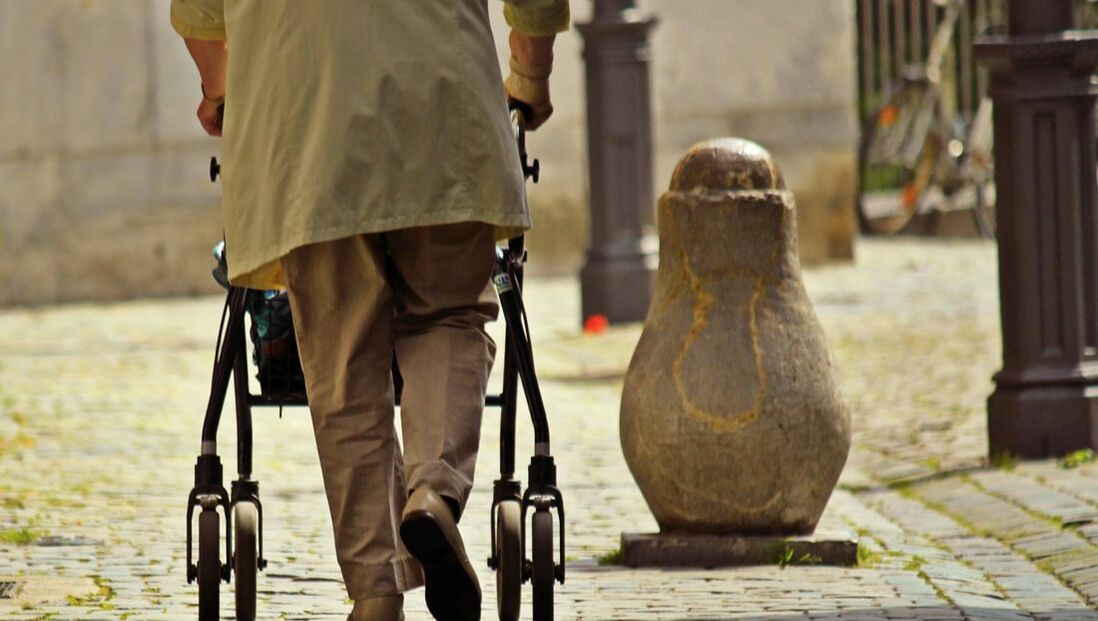 Welcome to our new subscribers!! And if you haven't joined the conversation on Facebook, then find us @ptsonmission to continue to receive updates, encouragement, and information. Finally, tell a friend if you are benefiting from this site. We all work hard to provide the most up to date evidence to impact our treatment outcomes for our patients but an equally big part of better treatment outcomes is patient education. I will likely talk more about that on a later post, but for now let's recognize that using analogies and visuals can really bring a greater understanding to the patient of the “why” behind what we are telling them to do. Sometimes, we use visuals and pictures for our patient education to help a patient return from the brink, if you will; to try and help the patient avoid going to a place of catastrophe. You know the scenario: A patient receives an x-ray or MRI and then they are told about all the structural deformities that are going to cause more pain and functional limitation. Naturally, the patient becomes anxious or worried and then is often scared to even move. That’s why I keep this study on hand. We, in the rehab world, are learning more and more about so many asymptomatic structural problems that appear on imaging (I use the phrase “wrinkles on the inside” to describe that phenomena to my patients). So we often cite the studies, statistics, and percentages to our patients which is important and helpful. But like I said, I keep this study on hand because a picture is worth 1000 words. Healed Disk Protrusion I love to show this study, especially for my patients with low back pain and imaging which confirmed disk issues. When they learn that the bulge nearly disappeared without any surgical intervention but only conservative treatment you can usually feel the anxiety and worry melting away. All of the sudden there is hope as they say out loud, “That healed?” Then I am able to affirm that the body is great at healing. We just have to help facilitate the natural healing process. I hope you find this article and picture helpful to your patient education and I hope you use it to help reduce anxiety and worry in your patients Jason ***Check out my new book "Rehab the World" written for Physical Therapists to encourage us in our workplace and prepare us to serve those around us. If you like, please leave a review and spread the word!!***
0 Comments
 Welcome to our new subscribers!! And if you haven't joined the conversation on Facebook, then find us @ptsonmission to continue to receive updates, encouragement, and information. Finally, tell a friend if you are benefiting from this site. Today on the blog, I invited back my colleague Alyson O'Banion to participate in the "Faith at Work" series. If you missed her first thoughts on the blog about interdisciplinary care, you can get caught up here. Also, if you missed any of the "Faith at Work" series you can follow these links: Clinic Management, Outpatient/Sports Medicine, Spinal Cord Unit, Faith at Work Intro. Anyway, I hope you enjoy Alyson's honest and heartfelt thoughts! 1. Where do you work and describe the patient population in which you work? I work in the outpatient neuro physical therapy department of Augusta University Rehabilitation. My patient populations mostly consist of multiple neuro diagnoses to include: stroke, Multiple Sclerosis, Parkinson’s disease and other neurodegenerative diseases, spinal cord injuries, ataxia, vestibular dysfunctions, imbalance and gait dysfunctions, neuropathy, and chronic conditions (i.e. osteoarthritis of the spine, hips, knees, and shoulders). 2. What do you enjoy about working in your field of PT? I enjoy the education component of what I do the most. Most patients do not understand the diagnosis that has been given to them. Receiving the knowledge of rehab expectations and management of the diagnoses are very helpful to the patient and family. I also enjoy seeing patients improve with intentional prescribed exercises and activities, which begin to improve their overall function and increase their independence. 3. What are some of the unique physical, emotional, or spiritual challenges of working in your field PT? Physically, those patients who need extensive hands-on mobility skills are the toughest. My physical strength is often not enough to assist the patient and to facilitate the skill(s) that is to be practiced while maintaining the best safety strategies. Because help is needed, families may assist, which can also help at home to reproduce the activity. When help at home is not available, exercises often need to be changed to make the activity more simplistic and only require one-person assist. Also, those patients with Parkinson’s disease who are following the protocol of LSVT are physically demanding, as I must demonstrate the hour-long group of exercises at a high intensity for the patient to simulate, all while assisting with shaping and modeling the patient for the correct techniques. Emotionally, many patients and families that attend that have been drastically impacted by a significant decline (such as a large stroke or significant decline from a progressive disease) are challenging. Lives have been radically altered and significant home and social changes are required. Tears from my patients and their families (and sometimes me) are frequent, and the need to give my whole self becomes the normal. My goal is to pour out compassion and education to best meet the immediate needs and anticipate the future needs of my patients. Some emotional stress can be induced by reaching out to other members of the healthcare team, which may or may not be already initiated. The many different needs and services a patient may require may take a long time to get approved and that can very frustrating to both the patient/family and to me because it hinders recovery. My time spent in helping a patient recover can be emotionally exhausting. Spiritually, some days are very challenging. At times, I can find myself spiritually drained as I assist my patients and families whose lives have been drastically altered. Daily, I am reminded that sin is ever-present, seeking to destroy us; injuries, sicknesses, and diseases are constant reminders that bad things happen—even to the good. Numerous patients and families I help are in a place of chaos and unexpected, life-changing times. Many come with much hopelessness, despair, depression, and anxiety. Many, also, do not have a personal relationship with the Lord. I value my ability to just stop in the midst of the chaos and offer to pray with the patient for comfort, peace, and guidance to lead toward a path of physical, emotional, and spiritual healing. 4. How does your faith impact your work and how you view your patient interactions? My faith definitely shapes how I view my work and my patients. I recognize that each patient I treat is made by God with value. My faith also informs me that my everyday work is ministry work. So, sharing and practicing my faith, regularly attending church, and participating in the service as part of our church's music program continues to ground me and reminds me of God's goodness and faithfulness which then spills over into my work week. It also helps me to have Christian music playing in the background, because it reminds me that He is present and working no matter where I am. 5. Briefly describe a story in which you really felt like you ministered to a patient. Many stories come to mind when I think about my PT and ministry to my patients. One particular time I felt God leading was in treating a homeless man. Honestly, I do not even remember what his therapy need was, maybe imbalance or gait difficulty. But what I do remember is his brokenness. In asking more specific questions I was able to determine that he spent his nights in a homeless shelter and was on the streets during the day. He came to the clinic each session wearing the same clothing and worn bedroom shoes. We were able to talk through his extreme loneliness, helplessness, and his physical needs for bare necessities. I was able to share the Gospel with him, telling him that he was loved and that someone cares about him. Personally and with family help, I was able to provide him with toiletries, clothing, and shoes. I was also able to give him community resources to continue assisting him and his needs. He was very grateful for my therapy intervention, but also very happy that there was someone who actually saw him, not just another patient with a diagnosis. He will always stand out as a reminder that we all have a story about the journey we are on so we should always remember to love and show great compassion, which can lead someone to Christ! Alyson |
Awesome ResourcesThe Gospel at Work Archives
May 2024
Categories |
 RSS Feed
RSS Feed